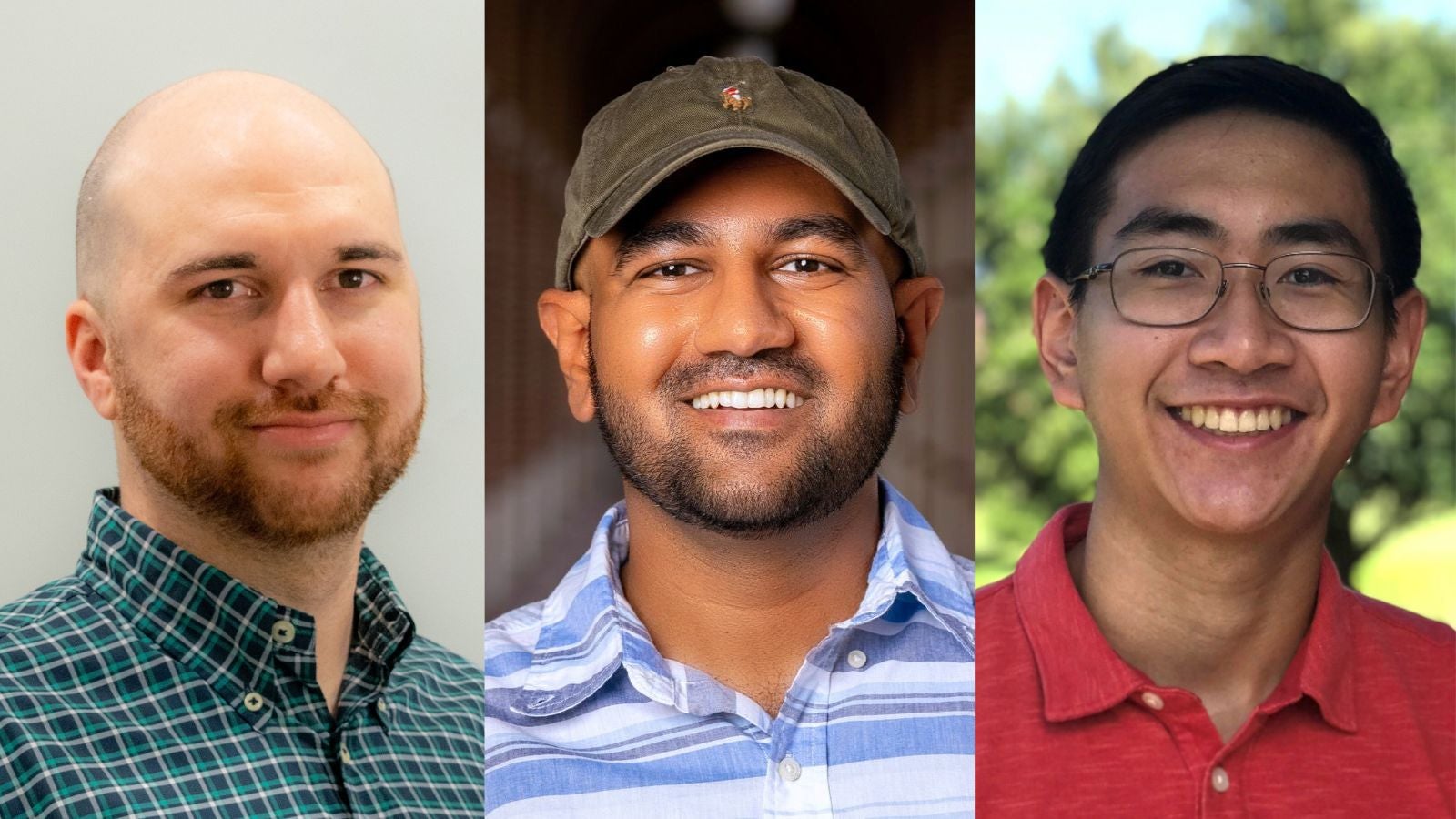Two student researchers in CS Assistant Professor Tirthak Patel’s Positive Technology Lab (PTL) have been recognized for their exceptional contributions to quantum computing.
Jason Ludmir, a third-year CS PhD student, was awarded first prize in the graduate category at Supercomputing 2024 (SC24) for his poster and presentation “Increasing the Efficiency of Neutral Atoms: Reducing Qubit Waste from Measurement-related Ejections.”
Earlier in the year, Jason Han–formerly a Rice CS undergraduate and now a student in Rice’s CS master’s program–won first place in the undergraduate category at SIGMETRICS 2024 for his research “Turning Quantum Noise on its Head: Using the Noise for Diffusion Models to Generate Images.”
Both were Student Research Competitions (SRC) organized by the Association for Computing Machinery (ACM).
“Both projects tie directly to the research focus of our lab,” said Patel. “Jason Han’s work explores using quantum noise for generative diffusion models, which connects to our lab’s efforts in leveraging quantum mechanical phenomena for advancing machine learning techniques.
“Jason Ludmir’s work focuses on making neutral-atom quantum computers more efficient by reducing the overhead caused by qubit ejections and reloads. This complements our lab’s broader aim of optimizing quantum hardware for real-world applications.”
Of the winners, Patel said, “Both of them stand out because of their curiosity, creativity, and work ethic. Both are deeply committed to their work, collaborate well with others, and are constantly pushing themselves to learn and grow. These qualities make them exceptional researchers.”
Patel himself was also recognized at SC24, granted an Honorable Mention for the 2024 SIGHPC Doctoral Dissertation Award for research he continues in the PTL.
“My dissertation focused on integrating quantum and HPC systems to make quantum computing more practical and accessible for applications like optimization and scientific computing,” he said. “The themes of combining systems and making quantum computing usable in real-world scenarios connect my past work to the projects we’re pursuing now.”
Making neutral-atom systems more efficient
Most quantum computers use superconducting hardware systems, but neutral-atom computers present an alternative hardware architecture, said Ludmir, and have some advantages over superconducting quantum computers, such as lower error rates. “Even more impressively,” Ludmir said, “neutral atom qubits are even capable of physically moving during program execution.”
He explained that one downside of neutral-atom computers is that “in order to measure the end state of each qubit (either 0 or 1), the computer ejects any qubits in the 1 state. This means that after every single program execution, the computer has to reload each of the ejected qubits.” And the reloading process takes about 2,000 times longer than the program execution itself.
Measurement-related atom ejection was a common issue in Ludmir’s research, so his prizewinning idea coalesced to address the “dire need to improve the measurement process” in neutral-atom computers and improve their efficiency.
“Jason Ludmir excels at tackling systems-level challenges and applies innovative and practical solutions to address them,” said Patel.
Ludmir said winning was both a “big shock” and a “very welcome surprise. “I cannot overemphasize the importance of having a good advisor as a PhD student,” he said, “and Dr. Patel has been amazing.”
Putting quantum noise to good use
Quantum noise–often unpredictable fluctuations and disturbances–is generally undesirable in quantum computing. But could it have positive applications, too? Patel and Han explored this question, which led to Han’s prizewinning project.
“Traditionally, efforts have focused on eliminating noise in quantum computing to achieve accurate results;” said Han, “however, we proposed leveraging this inherent noise to enhance image generation, turning a challenge into an advantage.” He explained that “classical computers generate random noise in a predictable manner, but quantum noise offers true randomness, potentially improving the computer's learning process in refining images.
“This research has broad applications, as diffusion models are increasingly utilized across various industries,” Han said, such as medical imaging and product design.
“Jason Han has an intuitive understanding of how to apply quantum concepts to solve machine-learning problems,” said Patel, “and has a knack for thinking through complex problems.”
“This award was the culmination of months of work in collaboration with Professor Patel,” said Han, “and has been the first project I've led from the start to the finish. Being able to travel and present my work at SIGMETRICS was a fantastic opportunity.”
Conferences provide needed recognition for budding researchers
The SC24 and SIGMETRICS conferences “are incredibly important in their respective domains,” said Patel. “They attract top talent and provide a platform to showcase ideas that push the boundaries of what’s possible in computing.”
For students, the ACM SRC competitions held at these conferences “play a crucial role in nurturing early-stage researchers,” said Patel. “Beyond the accolades, these experiences help build confidence and connections within the academic community. For someone just starting out, having their work acknowledged at an international level can be transformative.”

